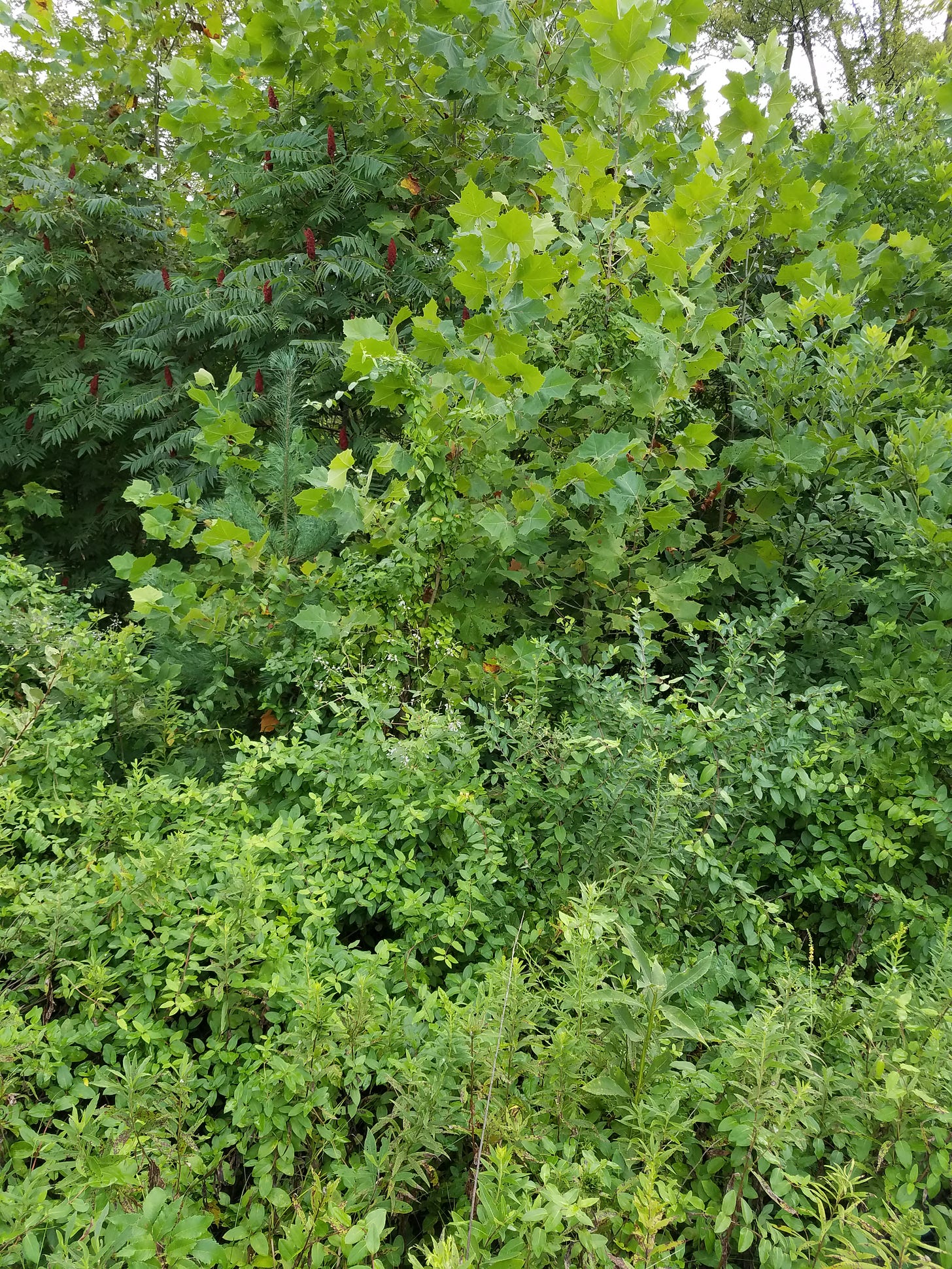In Praise of the the Thicket
I’ve come to really appreciate thickets in the past year, partly due to my increased interest in harvesting deer from the farm. Being a prey species, whitetail are attracted to dense stands of vegetation that offer cover for safety and shelter. They easily slip into areas full of tangled vines, brambles. and thorny shrubs that humans usually avoid. If you want to have deer spend more time on your property, you need this type of habitat according to those in the know.
Low, brushy cover is also beneficial for many other creatures. An open field is a perilous place for rabbits, mice, voles, and other small animals venturing out for sustenance or mates, as is the open space under mature trees. Areas without sheltered perches will not attract birds. The edge where forest meets field supports short, dense vegetation taking advantage of sunlight, which in turn attracts critters, one of the reasons edges are so desirable.
In the case of the farm, the Savanna is the spot to visit for those who appreciate a good thicket. It has begun its journey from bare field to forest, and sunlight is abundant, allowing emerging trees to spread out rather than shoot upwards as quickly as possible to reach the light. Pawpaw patches are starting up, which are naturally multi- stemmed due to root suckers. Crabapples are most likely browsed by deer at a young age, resulting in Byzantine branching patterns. In the lower and wetter reaches of the Savanna, young sycamores, never having to compete for water, grow happily in dense copses. And there are blackberry brambles everywhere, some in impenetrable masses taller than I am.
I don't value thickets merely because they result in more meat in the freezer, or better wildlife viewing opportunities. They rank high in my esteem for aesthetic reasons as well. It wasn’t always thus; as my knowledge of the benefits of thickety growth evolved, so did my appreciation of them visually. Landscape designers create “garden rooms” to make the most of small yards. In my opinion, Mother Nature has perfected this design trick: She has graced the Savanna with a cherry grove here, a holly/crabapple/pawpaw combo over there. There are lovely walls in some of her rooms like the one pictured below made of sumac, sycamore, tulip poplar, white pine, and optimistic ash saplings. (How's that for species richness!)
Thick vegetation that doesn't immediately reveal all its secrets makes for a wonderful visual experience. It makes our relatively small Savanna (approximately 10 acres give or take) seem much bigger than it really is. If you consider surface area, acreages with a mix of grasses, forbs, shrubs, and small trees actually contain more than a grassland or mature forest, and are highly productive relative to their size. Imagine pulling your bedspread up into raised peaks here and there across the bed. The edges pull in so it occupies a smaller footprint, but the surface area remains the same. All those plants of varying heights capture sunlight on their tops and sides, maximizing photosynthesis.
The usual American urge when confronted with thick, mixed vegetation is to get rid of the “mess”. Most landowners seem compelled to clear, clean, rake, burn, and interfere in every way possible until the site in question is a mowable expanse interspersed with neatly spaced, single-trunk trees with no lower branches. Limbing trees up is often advised when the goal is straight trunks for lumber. I don't plan to harvest the trees in question so why remove limbs that are so useful? The compulsion to remove all undergrowth and pour resources into a lawn is beyond my ability to analyze here, and is a topic better suited for a psychiatrist’s couch.
Though garden rooms are fashionable, traditional landscapes often feature tidy, widely-spaced specimen plants. As I've pointed out many times, the biggest obstacles to success in ecologically friendly gardening exist in our minds. A dogwood/spicebush/sweet shrub combo (for those in the northeastern quandrant of the U.S.) is a fantastic way to add a thicket, but is seldom seen in yards. It's crowded appearance strays from the popular coiffed look, and the homeowner would probably worry about how it negatively affecting property value. The hipper and more environmentally aware gardener may snicker at such an uptight attitude, but ideas but what is acceptable abound even in more enlightened circles. Permaculture practitioners who ostensibly learn from and mimic nature are often caught up in dogmatic notions of proper practice. But that's a rant for another post. Meanwhile we can work toward the acceptance of the thicket by creating beautiful ones in our yards. Gardeners in thickly populated areas are well placed to showcase such examples. The best way to phase out the onerous is to create a attractive alternative. Happy thicketing!








Well worded and informative